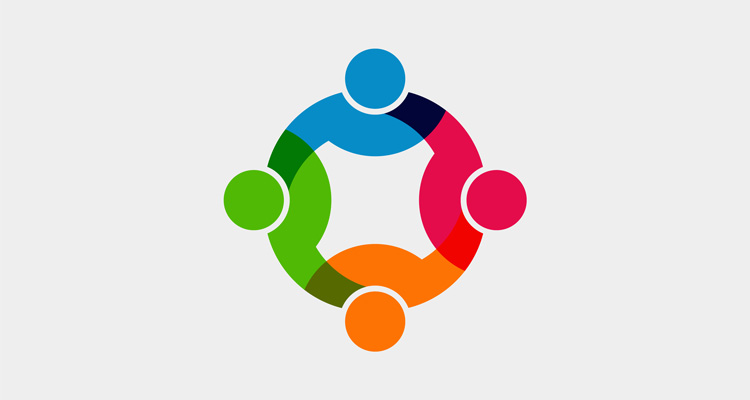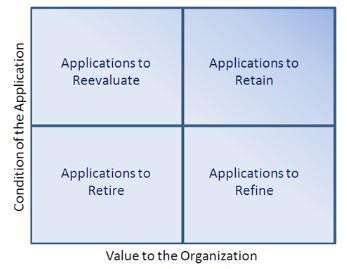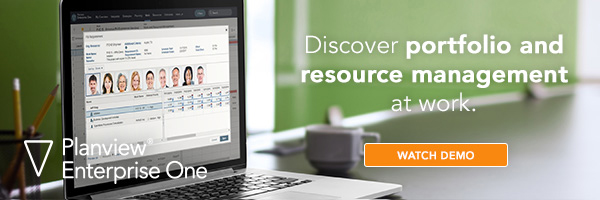
The following content is taken from the whitepaper, “Portfolio-Driven Performance: The 7 Process Areas That Drive IT and Business Results,” written by Jerry Manas. To make it more easily accessible to you, we are giving it everlasting life here on the blog.
We’ve discussed how portfolio-driven performance improves project delivery, how and why you must align strategy, financials, and execution, and why the relationship between demand and project management is so important. To close out this series, we’re going to examine how IT departments are strategic partners to the organization and how they can change the business for the better. Make sure you are caught up on the previous three blogs in this series, listed below:
- Part 1: Using Portfolio-Driven Performance to Improve Project Delivery
- Part 2: Why You Should Align Strategy, Financials, and Execution
- Part 3: A Look into the Relationship Between Demand Management and Project Management
Process Area 5: Product Portfolio Management for IT-Developed Products
IT departments today aren’t simply run-the-business, keep-the-lights-on shops. They are strategic partners who can play a role in helping their companies become more innovative and nimble.
One way they help change the business is in the development of applications that improve staff productivity and efficiency, among other things. Some companies, seeing the intrinsic value of these applications, productize and bring them to market. And some IT departments are directly involved in the product development process, creating innovative technology services expressly for external customers.
For IT departments accepting the additional challenges of becoming de facto product development shops that generate user and shareholder value, product portfolio management can be a boon. Product portfolios consist of products in various stages of the product development lifecycle, from ideas to market trials through delivery. They are an excellent way to track and manage the following:
- The product’s progress along the product development lifecycle
- The status of projects undertaken to develop and launch the product
- Resolution of resource or project issues that may put the product’s release dates in jeopardy
- An active product’s maturity and performance in the marketplace, possibly requiring new projects to replace or update the product
Products are generally tracked by product line and release. For example, an insurance company may track various releases of software to support online services.
Commercial factors such as market size, market growth, relative market share, etc. should be tracked as well, as these elements will aid in decision-making. This combination of product development release tracking, product maturity tracking, and market analysis can help an organization gain the visibility needed to make better strategic and staffing decisions around products and projects.
Release management in particular is a way to bridge strategy, product development, and project management, to assure that all are in alignment. In this way, product portfolio management is a crucial part of the portfolio ecosystem for any product-based company.
Process Area 6: Application Portfolio Management
Applications can be considered soft assets to an organization. While not a physical product, it still is a tangible producer of value, and typically has an annual budget and assigned resources to support it. Behind all this is the underlying IT infrastructure. The hardware components of the infrastructure are considered hard assets. Again, there is a budget for this, and there are associated services and costs to maintain it.
Applications and other assets can be organized in an asset hierarchy, which can serve to categorize and group assets that drive major business functions. For example, the hierarchy below could be set up for software, while other classes and sub-classes can be set up for Web servers, data/storage, infrastructure, and other hard assets.
Class: Software:
- Sub-Class: Business Applications
- Sub2-Class: Enterprise Resource Planning
- Sub2-Class: Supply Chain Management
- Sub2-Class: Customer Relationship Management
- Sub-Class: System Management Software
- Sub-Class: Security & Privacy
- Sub-Class: Other Software

Application Portfolio Management includes maintaining a list of software applications by category, along with attributes that define the applications, and indicators that depict their technical condition and their value to the company. With this information, a quadrant chart can be maintained where the vertical axis represents the condition of the application, and the horizontal axis represents its value to the organization. This allows the following categorizations to be made:
- Upper right quadrant: Applications to Retain – Applications that deliver reasonable business value and are in good condition. These applications can be maintained and evolved.
- Lower right quadrant: Applications to Refine – Applications that deliver reasonable business value but score low for technical condition. These applications could be considered for reengineering and modernization.
- Upper left quadrant: Application to Reevaluate – Applications that are in good technical condition but deliver low business value. These are reevaluation candidates and their value should be questioned.
- Lower left quadrant: Applications to Retire – Applications with low business value and poor technical alignment. These may be considered for consolidation or retirement opportunities.
In addition to assessing the condition and value of applications and other assets, Application Portfolio Management enables an organization to track relationships with other applications, services, and projects. In this way, a true picture of the application’s total cost can be gained, and better decisions can be made when contemplating upgrading or retiring applications.
Some organizations use a portfolio approach for all assets, including software and hardware, and refer to this as Asset Portfolio Management. The same concepts apply. In either case, by adopting a portfolio approach to maintaining applications and other assets, an organization can gain a better understanding of the true value and cost of the assets (including the cost of related active projects and services), and the upstream and downstream impacts of upgrading or retiring the assets.
Achieving Portfolio-Driven Performance with Planview Enterprise
Planview offers portfolio management solutions that help organizations embrace change by bridging the gaps between strategy, Finance, and operations. Our portfolio-driven approach integrates ideation, strategy, operational planning, execution management, and Finance in order to provide a crystal-clear picture of value delivery at all levels of the organization.
We help organizations align their most critical resources—people and money—with strategy; create a competitive advantage through the ability to rapidly adapt to change; drive efficiency through a unified view of all business components; and measure true value through a holistic set of metrics.
End-to-End Portfolio Management
Our unique focus on end-to-end portfolio management enables an organization to drive innovation and operational efficiencies—from the voice of the customer, all the way through to the delivery and measurement of value. The diagram below illustrates the breadth of our product suite, each component fully integrated through the power of portfolio management.
With this holistic, integrated, portfolio-driven approach, Planview can help you and your organization embrace change, create unity, and thrive in an environment that’s defined by change. Visit www.planview.com to learn more and register for a free demo of Planview Portfolios today!


![The 2018 Product Portfolio Management Survey Shines A Light on Top Performers [Video]](https://blog.planview.com/wp-content/uploads/2018/06/PDPM-study.gif)


